


![]()
ONLINE
Building for the Future
Editors’ Note
In 1976, along with William (Bill) Pedersen and Sheldon (Shelly) Fox, A. Eugene Kohn founded KPF with the commitment to providing design and management excellence matched with technical proficiency and superior client service. Serving as Partner-in-Charge of many of KPF’s major domestic and international projects, he, along with his original partners, shaped the firm into one of the world’s leaders in all aspects of architectural practice. Kohn earned B.A. and M.A. degrees from the University of Pennsylvania and served in the U.S. Navy on Active Duty for three years between degrees, for five years on Reserve Duty, and retired as a Lieutenant Commander. He is an Executive Fellow of the Graduate School of Design at Harvard University and currently teaches as a member of the faculty at the Harvard Business School. He helped establish the Harvard Real Estate Center Academic Initiative and has served as a trustee for the University of Pennsylvania. He is also a founding member of the Wharton Real Estate Center Advisory Board. He was honored most recently with the Soane Foundation Honors and the 2010 Alumni Award of Merit by the University of Pennsylvania – the highest university-wide award presented to alumni by Penn. Kohn has also been recognized with the Wharton Real Estate Center’s Lifetime Achievement Award; the University of Pennsylvania – PennDesign Dean’s Medal of Achievement, the highest honor awarded by the institution; and the Ellis Island Medal of Honor. In 2013, Kohn was honored by Publicolor.
Company Brief
Operating as one firm with six global offices, KPF (www.kpf.com) is one of the world’s preeminent architecture firms with 600 staff members from 43 different countries speak in more than 30 languages. The firm’s diverse portfolio features over 70 projects (certified or pursuing green building certification) and comprises corporate, investment office buildings, hospitality, academic, medical, research, civic, museum, transportation, residential, and mixed-use projects, located in more than 41 countries.
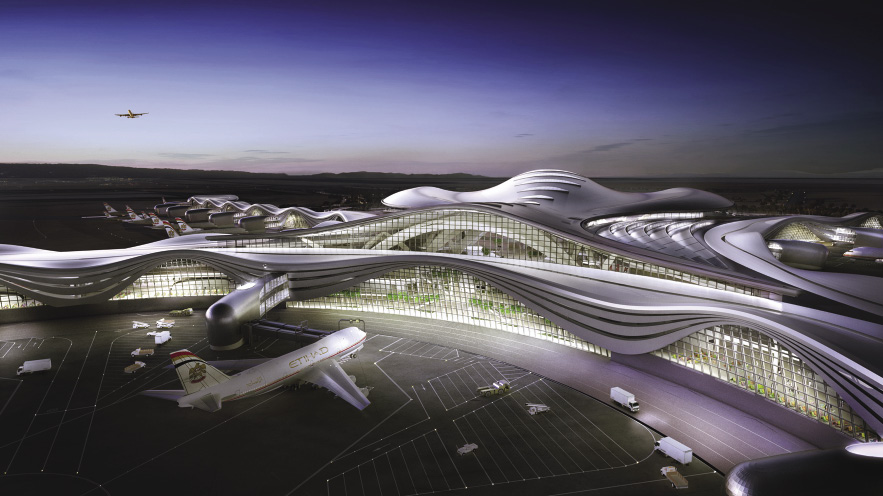
Abu Dhabi International Airport Midfield Terminal
What makes KPF such a special firm?
The structure of our firm is unique. Many architects I meet around the world say our firm is the role model for architectural practices today. We have never been about the individual but about the team. From the start, we thought about transition of leadership. We were determined that the firm should continue long after the original partners moved on, and that the future firm would do as well or better than we have.
To build a great firm, we focused on recruiting outstanding talent – the key to success is bringing in people better than yourself, people who challenge you.
We have never wavered from our vision: building for the future with continued improvement. From day one, we have shared the credit with our young people and focused on the team.
KPF is 37 years old and, I believe, the only firm that has every generation that has worked from day one still in the practice. So we have tremendous experience that remains in the firm. We’re currently updating a building that we designed with the same design partners 25 years ago – how common is that?
KPF became global in the late ’80s – we have been working in China for over 23 years and in the U.K. since 1988. We developed the ability to work efficiently abroad with quality results. Unlike a lot of firms, we can keep our key staff busy gaining experience by doing projects in various parts of the world in the event of one or more areas of the world suffering through a recession.
We are better known for our commercial work – office, hotel, residential and retail – although we have designed over 25 educational buildings, hospitals, airports, and museums.
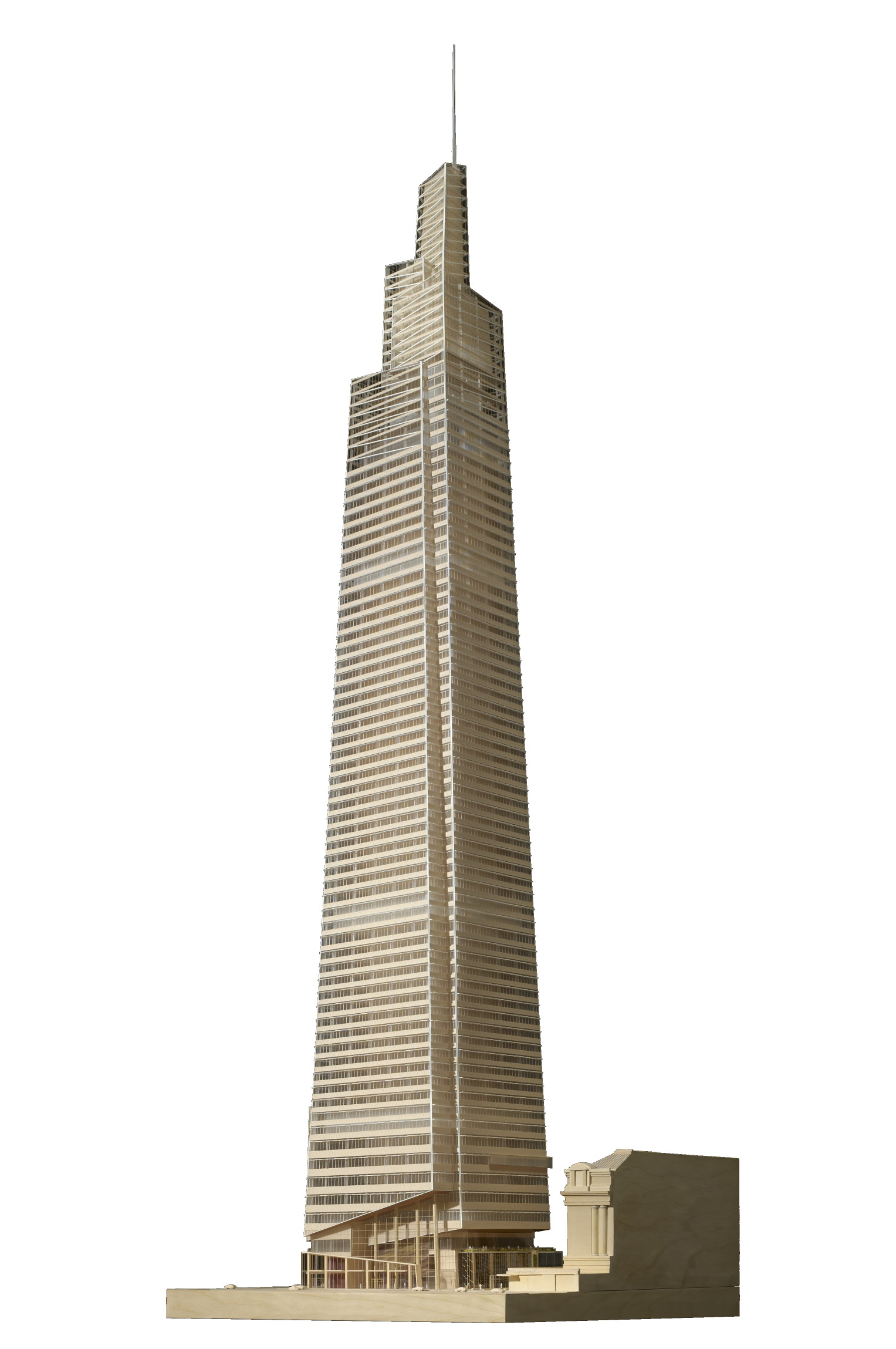
One Vanderbilt, New York
How do you expand as a firm without losing the culture?
The expansion is led by partners who have been with the firm for over 20 years. Our tradition of working in teams is a global practice. KPF has always been focused on the clients and we demonstrate this to them by our commitment to their projects. Our clients don’t feel like they’re lost in an enormous company, as they relate to a team of outstanding people, and the most senior leaders are strategically included in each project. Be it a young staff member, a sales person or a consultant, we treat everybody with respect. People like us for who we are and how we relate.
Are young people now learning the industry in a different way with all of the new technology? Do they need to understand how it used to be done?
Young people are trained using technology. However, the principles of good design and creating quality living and working environments have not changed. Pre-technology, importance was placed on the draftsmanship, free-hand sketching, and three-dimensional rendering of space to capture the quality of light and air. Ideally, young people with excellent computer capabilities still have interest and skill in the art of pen and ink drawing, pencil renderings, and watercolor. I believe this talent and skill is still important.
With new technology, particularly BIM – which is a parametric 3D computer model –the complete building and systems information is embedded in the electronic model. Previously, people would work on one drawing at a time; thus, changes were difficult to make and mechanical/structural systems were more labor intensive to coordinate. Now, several team members in different locations can work on the same electronic 3D model – within a 24-hour period – which has a database built in. If you change a door location in the plan, it automatically changes the building elevations.
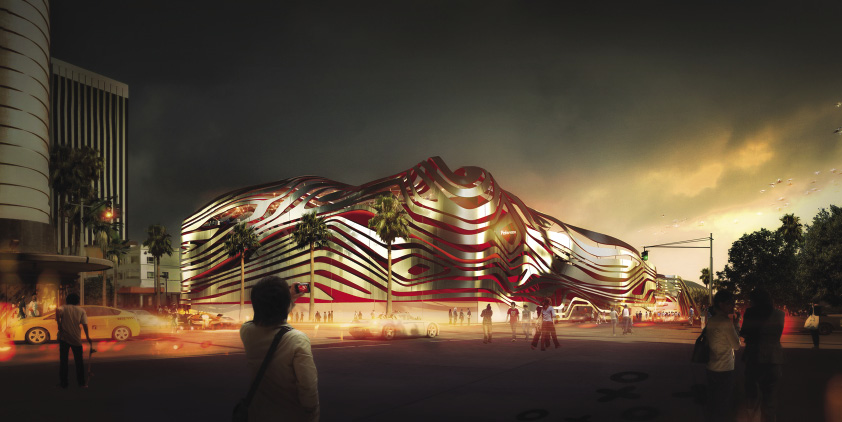
Petersen Automotive Museum, Los Angeles
You can cut sections through the building or areas of the building, and the program creates its own view port and formatted drawing sheet, saving time and effort. The drawings will always be coordinated since they are from the same model. Also, mechanical and structural engineers create their own models that are incorporated into the architectural model for coordinating and integrating the whole project for clash detection, interference checking, and consolidating all numeric and geometric project data.
This tool can show the building from any angle for the client’s review, and it allows the designer more time on the quality of design than on production.
The 3D model can be given to the contractor for area and cost estimating, also assisting the construction process. The client can use the model for future facilities management and monitoring.
Do corporate clients need to consider how the building will affect the daily lives of those in it?
Yes. If the building is well-designed and executed, their staff will be more inspired and efficient. They will produce quality work, and even work longer hours voluntarily because they will enjoy being at work. It’s about people working as a team, putting in the time requested, doing their jobs, doing them well, and creating better results. The environment we create affects how the users will do their work and how they will enjoy it.
New York developers understand what they’re trying to achieve and they’re very good at it.
Today’s developers are more concerned about what the result is, what the building looks like, and its quality (as opposed to before, when the bottom line was the overwhelming priority), while they are still concerned with the financial return. The developers now want to create the “wow” factor and want something they’re proud of as well.
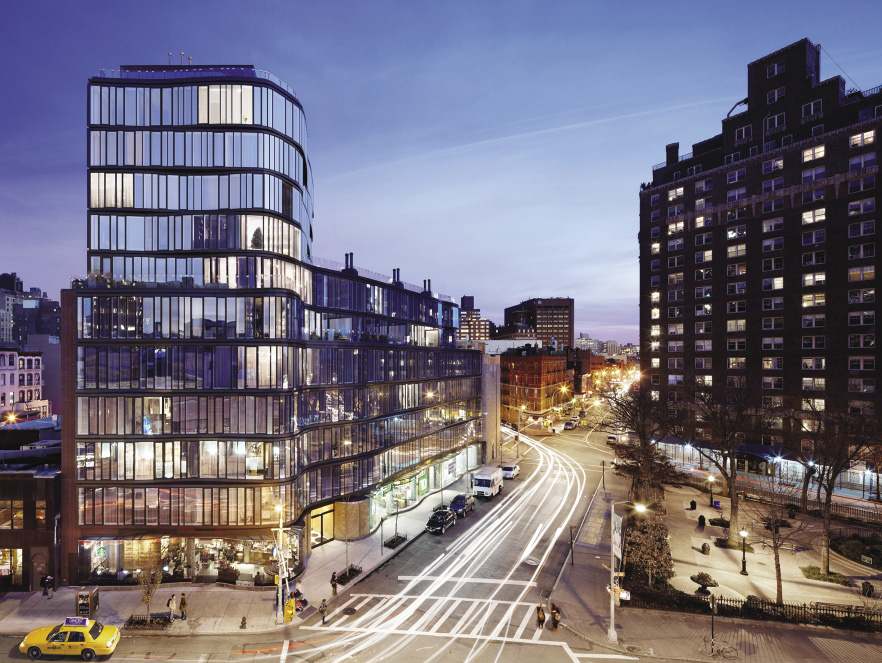
One Jackson Square, New York
Does it surprise you when you see the development and growth in New York, in particular?
Yes, more so for residential than for office buildings. Residential has changed. When I came to New York in the ’60s, I would not pursue residential projects – they were formulaic and no one seemed to care about proportions, elegance, exterior materials or details. Developers now realize that it can be profitable to do really well-designed, sometimes iconic, residential projects. There is no other place in the world where you can get these extremely high residential prices, aside from London.
Hudson Yards is almost like building a city within a city. What kind of impact will this project have on New York?
When we first went to look at the site, it was a pretty desolate area – not a neighborhood – and the High Line, which has since become a significant and successful asset for the city, had not been executed, so the true value it would have on the Chelsea area had not been realized.
Now we see the success of the High Line and its impact on Chelsea. You see the development of residential and retail buildings, hotels and restaurants, in addition to art galleries such as the Whitney Museum. Many young people are moving into this area. The High Line terminates at Hudson Yards, which serves as an anchor for this whole area – North and South.
The area will also have an extension of the 7 line subway with a station at 34th Street and 11th Avenue, which is critical to that area. It’s a long three-block walk to Penn Station but it is still very manageable. It is a terrific location, and as mentioned, you have the High Line to walk South, and eventually there will be a tree-lined promenade that goes North to 42nd Street from 33rd Street between 10th and 11th Avenues and Hudson Yards.
There are 40 million more square feet to be built. Hudson Yards is the focal point. It will extend all the way down to Hudson River Park, featuring major retail and office buildings, several residential buildings, a school, and quality public space to draw people that will include the work of outstanding artists.
It is our good fortune to be involved as master planners and also as architects for a number of the buildings, including the first two office towers.
At what stage do you get the feeling that a project will be special?
It depends on the goals of the client. You can often see great possibilities because of a site’s location and the program of a building or buildings.
In the case of Hudson Yards, Mayor Bloomberg’s leadership and vision make it a legacy project. Add to the Mayor’s vision the goals of Steve Ross (Chairman, Related Companies) and the developer of Hudson Yards, and you know this is going to be a special project.
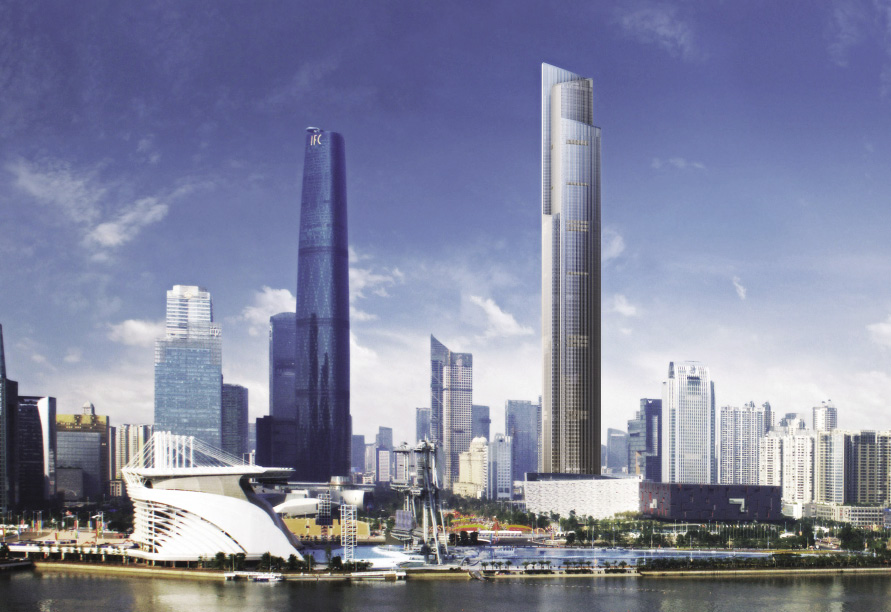
CTF Guangzhou
Is there more opportunity overseas than in the U.S. right now?
KPF is busy in New York, currently working for many major developers, in addition to smaller estates and excellent smaller developers, and handling a lot of residential projects and some office buildings. We probably haven’t been this busy in New York in years.
We are relatively busy in Washington, D.C. with three or four major buildings, while there seems to be little opportunity in Boston and Houston for KPF at the moment. We have one potential project in Chicago and one possibility in Colorado, and KPF currently is designing projects in Vancouver, San Francisco, Los Angeles, and San Diego. Canada has been an excellent place for KPF with projects for Cadillac Fairview, Oxford Properties Group, Bentall Kennedy and Graywood Developments in Montreal, Toronto, and Vancouver.
China still accounts for around 40 percent of our global revenue base, though it has slowed down a bit. The rest of Asia – Korea, Kuala Lumpur, Jakarta, Singapore, Hong Kong, India, and Thailand – brings the Asian total up to around 50 percent.
We’re also busy in Brazil and Chile, but these are not large projects. In the Middle East, we’re doing four to five projects, including the new Abu Dhabi Airport. In Europe, most of our work is in the U.K., with a few projects in Italy and France. Europe is currently a tough market, but is beginning to show signs of some improvement. Germany has the strongest economy.
How do you manage that kind of geographic spread with just six offices?
The London office (which has 125 staff) handles Europe and the Middle East, with some projects in China and India; we have people in Abu Dhabi on the ground because the Abu Dhabi airport project is so big and complex; our Shanghai, Hong Kong, and Seoul offices oversee Asia, but the design phases are still done in New York; the London office also does the design for its projects, sometimes in collaboration with the New York office; and South America is handled out of the New York office. We haven’t had a problem managing our work out of these six locations, and there is an ease in collaborating with all the offices. There is a desire for team effort using our best people who relate to the project, no matter where they are based.
How important to the success of the project is having a strong relationship with the developer?
If your relationship is not solid, you can’t perform well. The client has to approve your work and pay for it. It is a problem if the client doesn’t appreciate or like what you do and keeps changing things – your relationship will be strained and your work will suffer. My philosophy is that the client is always the most important aspect of any new project. You want a client who’s passionate about the quality of design and sensitive to the process.
The second most important factor is the site, which has a big impact.
The third issue, which is almost equally important, is the purpose, or the goal of the building.
If these three forces line up with your goals, you have the potential to create an outstanding project.
What about the relationship among the three original partners contributed to the success of KPF?
We were fortunate in that the three of us got along very well. Shelly unfortunately passed away about seven years ago. Bill and I have remained close friends, and are still working harder than ever and having fun too. All three of us genuinely liked and respected each other, and were able to resolve disagreements, of which there were few, easily.
I used my Navy experience and Shelly used his Army experience to set up our organization, and it helped us to be decisive. We remembered, no decision is worse than a wrong decision. There were the responsibilities of line duty and staff duty for most officers. At KPF, line duty relates to carrying out (professional) project assignments. But we had other roles to play: there were personnel matters, from recruitment to staff reduction to the finances and health care, matters of billing and collection, negotiating contracts, dealing with legal issues, and marketing and new business development. So each of us had to split these roles and that became the staff duty.
We made decisions based on what would work best for the firm and our clients, and what would contribute to the firm’s future success, not based on our own egos. Leaders should think this way – putting firm – or in politics, country and the people – first.
Will you ever consider doing a legacy project?
Yes, but when we look back, there are a number of projects that have been critical to the firm’s success to date, and some current projects that could be the legacies as well. The key to growth is to not do the same type of project over and over; one needs to elevate by type, quality, and size. I hope our firm is always known for its overall influence on design and its sensitivity to environmental issues. We may have already done the building that defines us: it could be the Shanghai World Financial Center project; or the International Commerce Centre in Hong Kong; the Roppongi Hills project in Tokyo; maybe the World Bank Headquarters in Washington D.C.; 333 Wacker Drive in Chicago, which was key to our early success; or it could be Hudson Yards, which we are currently designing; the Abu Dhabi Airport; the Semel Institute for Neuroscience and Human Behavior at UCLA; or the Petersen Automotive Museum in Los Angeles. Or it may be the consistent quality of our clients and consultants we work with across the globe, our outstanding staff of talented and quality people, our organizational structure, and our culture.
KPF has been very fortunate. We have assembled a most talented and dedicated staff with key people – excellent experienced partners, a number of whom joined KPF very early on – almost in the beginning – and have grown with us. We represent the total experience of the firm from its inception 37 years ago with some five to six generations. We have prepared for the future, which is upon us and beyond. Paul Katz and Jamie von Klemperer are leading the firm today, with the help of several other outstanding senior partners and of course the Board (which includes Bill Pedersen, Bill Louie, Paul Katz, Jamie von Klemperer, and myself. Jill Lerner recently stepped down as a Board Member to be President of the New York Chapter of the American Institute of Architects).
For me the key to success is the quality of clients and projects we attract. From the start, the quality has been of the highest level, and it continues today. At the start of Kohn Pedersen Fox, we stressed commercial projects, office, hotel, and retail, which needed more approval of quality architecture. Over time, we have become totally diversified with the addition of residential, educational, hospital and research projects, airports, U.S. Embassies, and GSA buildings (i.e. courthouses), performing arts centers, and museums, from renovations and repositioning projects to totally new constructions. The projects we have done range from a one-story structure to over a 120-story structure, from a project of 75,000 square feet to several over 10,000,000 square feet.
Finally, we have worked in more than 41 countries, including 24 states and 28 cities in the U.S. KPF has made an impact in many of these locations. Working globally has helped the firm remain financially strong during the recent recession, and has allowed our excellent staff to hone their skills. We have been recognized for our work with over 350 awards. I feel very fortunate to still be very committed, involved and part of this wonderful professional firm after 37 years.•